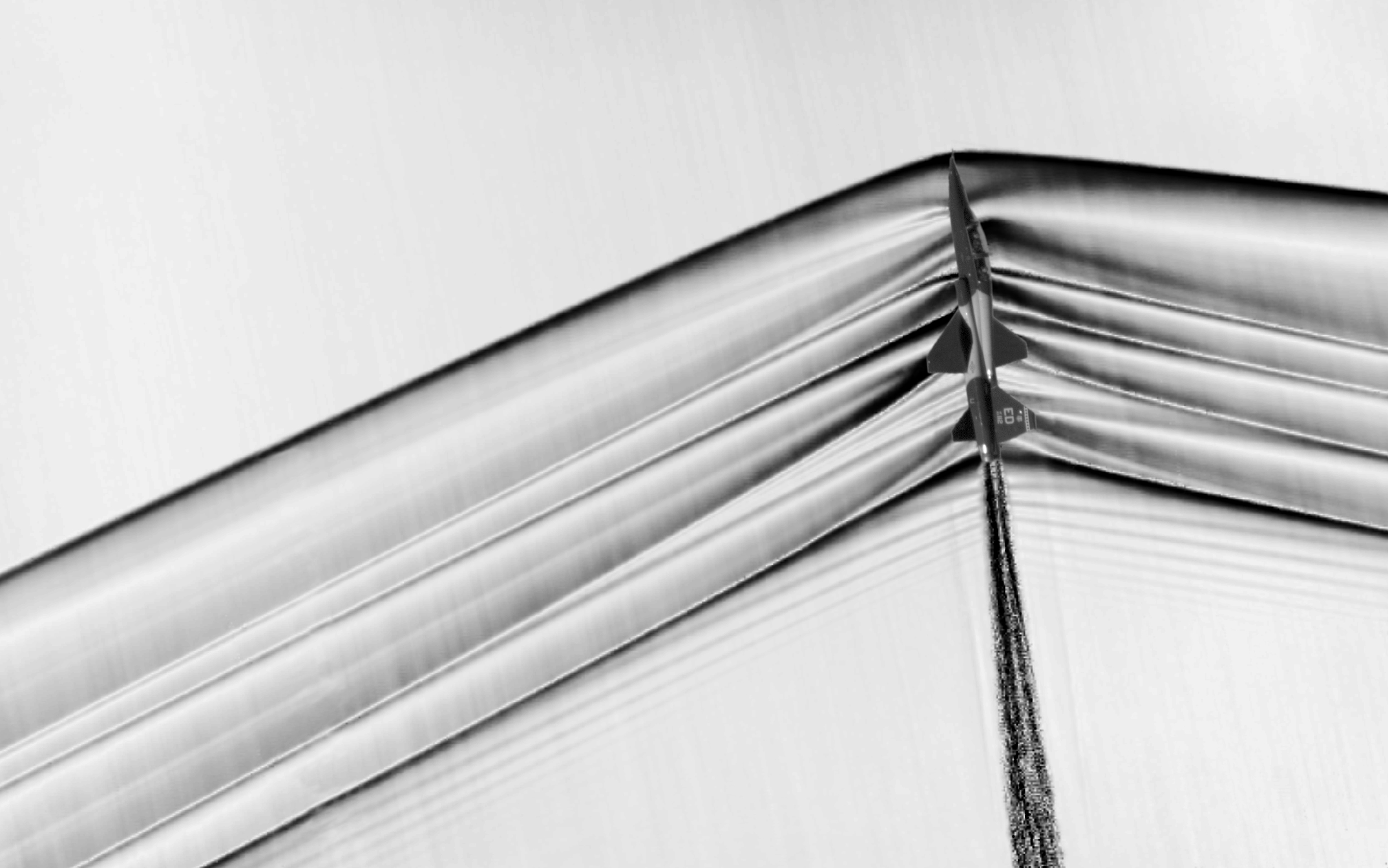It looks like you're using an Ad Blocker.
Please white-list or disable AboveTopSecret.com in your ad-blocking tool.
Thank you.
Some features of ATS will be disabled while you continue to use an ad-blocker.
2
share:
In 1864 German physicist August Toepler, invented a photographic technique for 2 dimensionaly imaging the flow of fluids of varying density. This
technique is common place in aircraft research and development but until recently has always been limited to being performed in the controlled
confines of a wind tunnel. Now, with the help of NASA over the past 5 years, new software and experiments are being used to perform this type of
imaging to full size aircraft. This allows, for the first time, to see air density shock waves and gradients for supersonic flight as it happens in
the real word environment. Using data from experiments such as this will be applied directly to the development for commercial supersonic transports
and the reduction of sonic boom effects at ground level.

www.nasa.gov...
en.wikipedia.org...
NASA researchers in California are using a modern version of a 150-year-old German photography technique to capture images of shock waves created by supersonic airplanes. Over the past five years scientists from NASA’s Armstrong Flight Research Center at Edwards Air Force Base and Ames Research Center at Moffett Field have teamed up to demonstrate how schlieren imagery, invented in 1864 by German physicist August Toepler, can be used to visualize supersonic flow phenomena with full-scale aircraft in flight. The results will help engineers to design a quiet supersonic transport. Although current regulations prohibit unrestricted overland supersonic flight in the United States, a clear understanding of the location and relative strength of shock waves is essential for designing future high-speed commercial aircraft.
More recently, synthetic schlieren techniques have been developed based on image processing methods. One, called background oriented schlieren (BOS), has been particularly successful in wind tunnel tests. First, researchers obtain an image of a speckled background pattern. Next, they collect a series of images of an object in supersonic flow in front of the same pattern. Shock waves are deduced from distortions of the background pattern resulting from the change in refractive index due to density gradients. This method requires very simple optics and a variety of background patterns, including natural ones, may be used. The complexity with this method is in the image processing and not the hardware or positioning, thus making BOS an attractive candidate for obtaining high-spatial-resolution imaging of shock waves in flight.

www.nasa.gov...
en.wikipedia.org...
edit on 3-9-2015 by Sammamishman because: (no reason given)
Nice...There is a plugin with Solidworks called Flowworks that gives virtual fluid dynamics (virtual wind tunnel) to 3D design objects.I think CATIA
has something the same..
new topics
-
Putin, Russia and the Great Architects of the Universe
ATS Skunk Works: 2 hours ago -
A Warning to America: 25 Ways the US is Being Destroyed
New World Order: 7 hours ago
2
